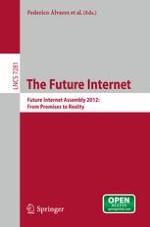Open Access 2012 | Open Access | Book

The Future Internet
Future Internet Assembly 2012: From Promises to Reality
Editors: Federico Álvarez, Frances Cleary, Petros Daras, John Domingue, Alex Galis, Ana Garcia, Anastasius Gavras, Stamatis Karnourskos, Srdjan Krco, Man-Sze Li, Volkmar Lotz, Henning Müller, Elio Salvadori, Anne-Marie Sassen, Hans Schaffers, Burkhard Stiller, Georgios Tselentis, Petra Turkama, Theodore Zahariadis
Publisher: Springer Berlin Heidelberg
Book Series : Lecture Notes in Computer Science